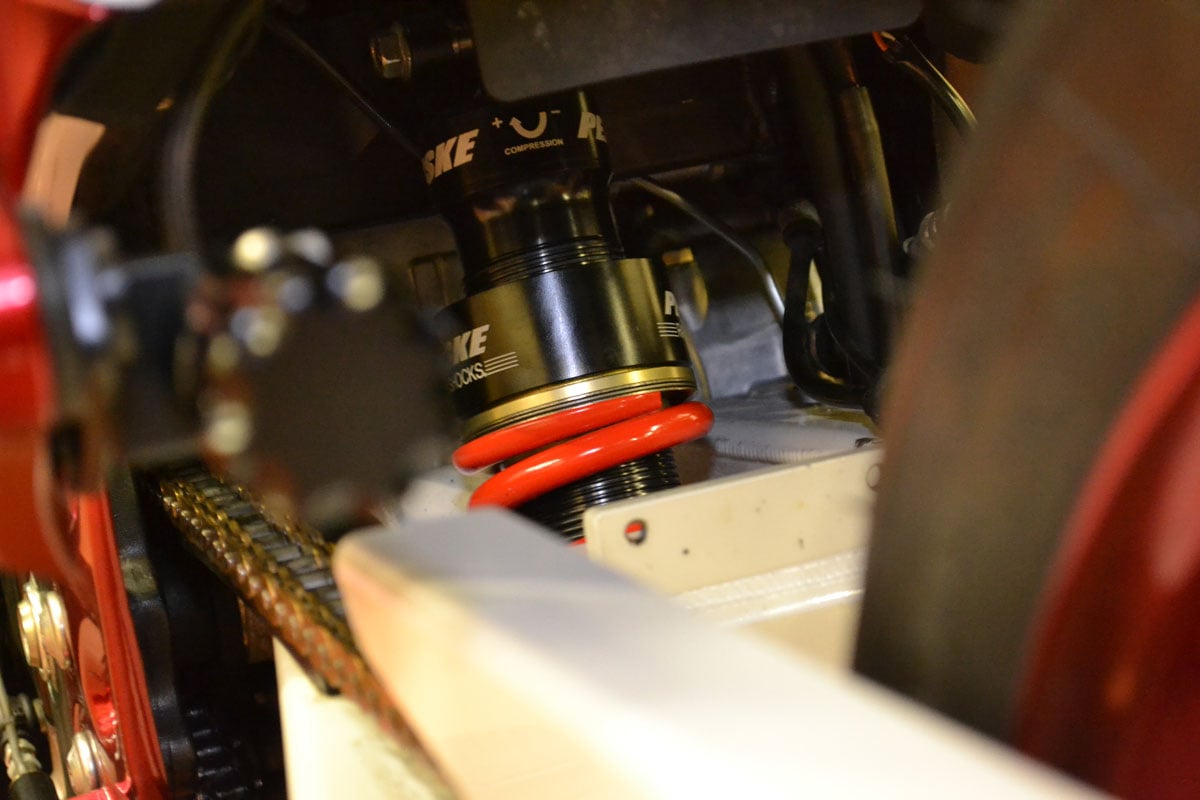Motorcycle Spring Preload: What It Does, and Why We Would Adjust it

February 21, 2022

Springs are a critical, foundational part of your suspension setup as springs determine the proper sag measurement and rider comfort.
Adjusting the springs helps prevent bottoming out, limits nose-diving when braking, and leads to an all-around better ride as they are crucial to how your motorcycle handles.
So that your springs better deal with bumps and changes in road surfaces, you change spring rates, or you can alter the amount of preload placed on them.
What Does Motorcycle Spring Preload Do, and Why Would We Adjust it?
It’s important to point out that preload doesn’t affect spring stiffness.
You can compensate for a too-soft or too-stiff spring by using preload, but you’re better off changing the spring itself.
What preload does, is mechanically compress the spring when your shocks are fully extended.
Let’s look at how you can adjust motorcycle spring preload to level up your performance.
How Does Motorcycle Spring Preload Work?
When you ride over a bump, your springs compress to absorb the force and then rebound to release the energy. In the best-case scenario, you’d barely feel the bump because the springs compress at a precise rate.
If your spring’s rate is 1kg/mm, when you compress the spring by 1mm, it will exert a force of 1kg back. When you turn the preload adjuster and add 5mm of mechanical compression, the spring would exert 5kg back. To compress it further, you’d need to apply more than 5kg of force.
The spring rate remains the same, but you change how the spring reacts to its weight when accelerating, taking corners, and braking.
Hard braking and acceleration have the potential to bottom or top out suspension. By not using all of the suspension’s available range, there is a buffer either way.
Why Would We Adjust Motorcycle Spring Preload?
As mentioned above, we don’t want to top or bottom out the suspension, as doing so reduces traction and affects handling. Having the ability to use as much of the suspension’s range is paramount, but not at the expense of reaching the end of its travel.
Enter preload. The buffer provided by preload should ensure you never reach the end of your suspension’s travel.
The more preload, the harder the suspension is.
The lower the preload, the softer the suspension is.
Finding a balance is crucial, but there are a few factors to consider when adjusting preload.
How Do We Adjust Motorcycle Spring Preload?
In a motorcycle fork, there’s usually a spring inside the fork tube. The fork will have a preload adjuster on it to add preload, and a socket or wrench will adjust it.
When you adjust preload, think about what you’re changing. If you want your motorcycle to turn into corners quicker, more preload in the back or less in the front helps. For more stability, less preload at the back or more in the front does the job.
However, too little preload in the front might mean your front rides lower, and your forks might bottom out during hard braking. Conversely, too much preload in the front could mean the front rides high and feels harsh.
Every Rider is Different
It’s almost impossible to find the perfect spring rate for any rider without considering a rider’s different needs and preferences.
Here, preload and sag intertwine. If the ride height is too high, there is too little sag. A motorcycle riding near the top of its suspension travel might feel stiff and uncomfortable.
Winding on preload raises the suspension, and removing preload lowers it.
If the ride height is too low and there’s too much sag, the motorcycle might feel unstable and move around too much.
As you can see, sag, spring rates, and preload all play a part in the perfect setup for your physical makeup, needs, and preferences.
For the correct spring settings, this on-demand webinar includes a live demonstration with a bike and rider and takes you through some of the basics of managing your spring setup. This webinar will help you make sense of each adjustment and how it will affect the feel and performance of your suspension.
A Team Effort
As well as the many elements involved in your suspension setup, you need a knowledgeable team to guide your efforts. Setting sag isn’t tricky, and experimenting with preload shouldn’t be intimidating, but it’s crucial to follow the correct steps and record every adjustment you make.
A good starting place for all things motorcycle spring preload is our webinar. If you’re ready to take the next step and optimize your suspension setup, reach out to one of our experts.


%20(1).png?width=1080&height=1080&name=Heritage%20Cruiser%20Shock%20-%20IG%20(1)%20(1).png)